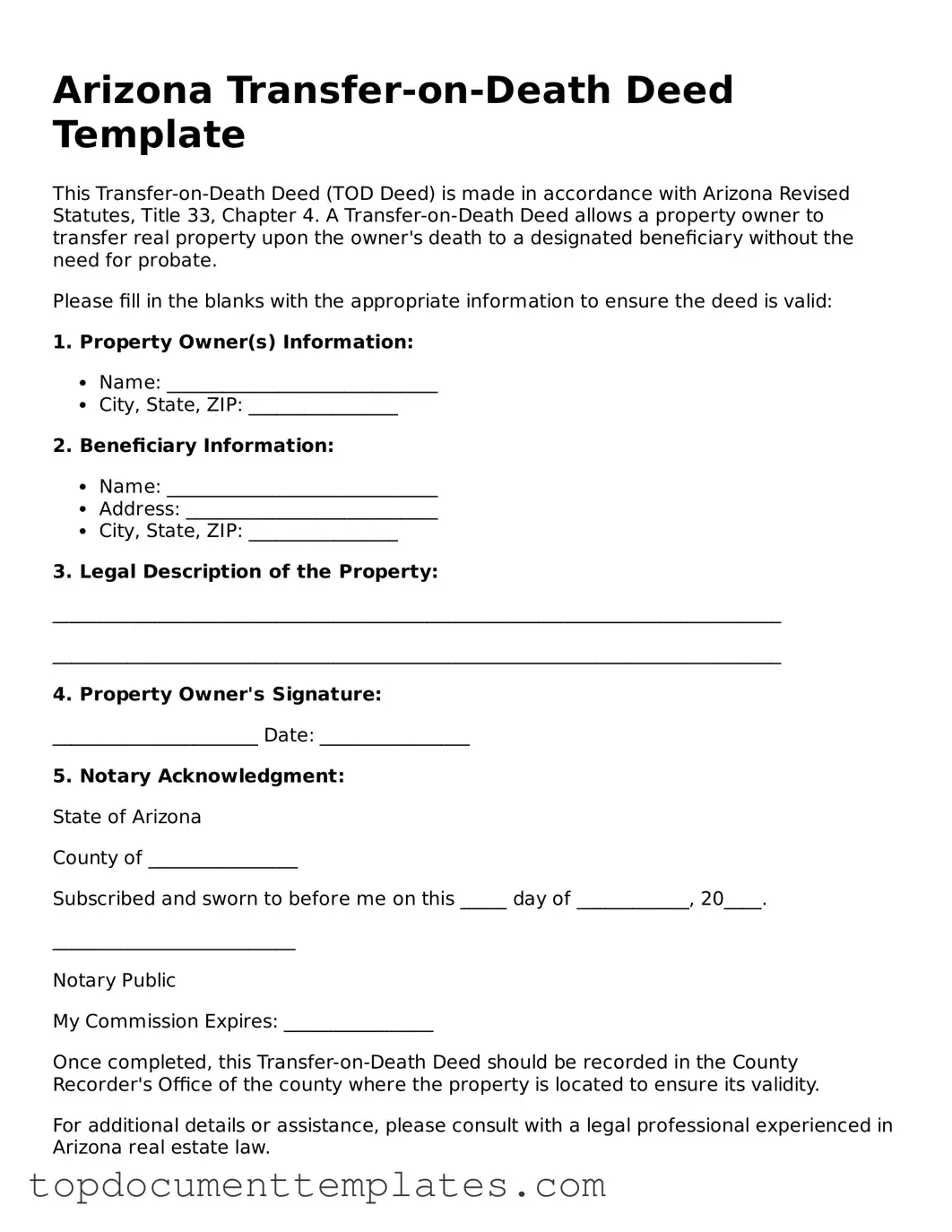In Arizona, the Transfer-on-Death Deed (TOD) serves as a valuable estate planning tool, allowing property owners to pass on their real estate to designated beneficiaries without the need for probate. This straightforward form enables individuals to retain full control of their property during their lifetime, while ensuring a smooth transition upon their death. By simply filling out the TOD deed, property owners can specify who will inherit their property, eliminating potential disputes among heirs. Importantly, the form must be properly executed and recorded to be legally binding. The TOD deed can cover various types of real estate, including residential homes, land, and commercial properties. Additionally, it provides flexibility, as property owners can revoke or change their beneficiaries at any time before their passing. Understanding the nuances of the Transfer-on-Death Deed is essential for anyone looking to streamline their estate planning process and secure their loved ones' future. With this form, property owners can confidently navigate the complexities of inheritance while minimizing the burdens often associated with transferring real estate after death.
